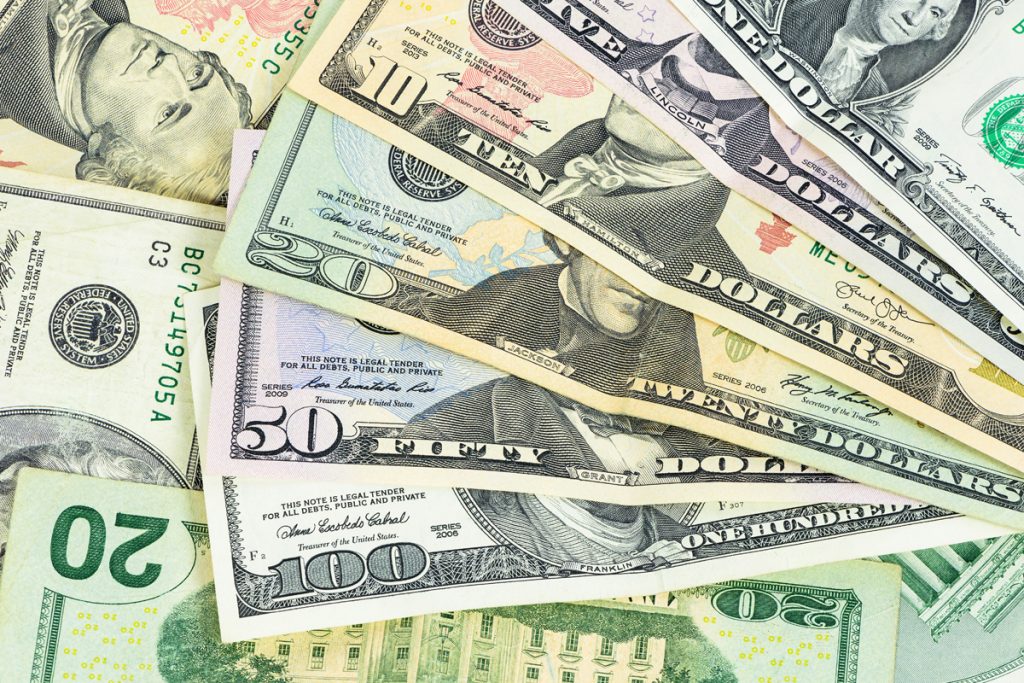You’ll get a discharge order after you finish your Chapter 13 repayment plan, which will wipe out the remaining sum of qualified debt. In fact, a Chapter 13 bankruptcy discharge is much broader than a Chapter 7 bankruptcy discharge because it eliminates debts that aren’t dischargeable in Chapter 7.
In a Chapter 13 bankruptcy, which debts are paid?
In bankruptcy, not all debts are treated similarly. Each one belongs to a specific category, which indicates whether the obligation must be paid or if it can be canceled.
The first stage is to determine if a debt is secured (backed up by collateral) or unsecured (no property may be taken if you don’t pay).
Priority and nonpriority unsecured debt are two types of unsecured debt. Priority unsecured debts are not dischargeable and are paid before nonpriority debts. Nonpriority unsecured debts are only paid if there is money left over, and the debt is usually dischargeable in bankruptcy.
Here are some of the most important details:
- Debts that are secured. If the obligation is secured by collateral, you must either pay as promised or surrender the collateral (usually a house or car). Long-term debts, such as a 30-year mortgage, are not need to be paid in full under a Chapter 13 plan. If you’re behind on payments, you’ll have to make up the difference in the plan. The debt becomes a nonpriority unsecured debt if you surrender the collateral.
- Unsecured debts take precedence. In a bankruptcy proceeding, these debts do not disappear. Priority claims must be paid in full in a Chapter 13 plan.
- Unsecured debts that aren’t priority. The bulk of nonpriority unsecured debts are discharged in Chapter 13 bankruptcy. Credit card debt, personal loans, medical costs, and utility bills all fall into this category. Although student loans fall into this category, they aren’t dischargeable unless you can show in an adversary procedure (a separate litigation) that paying the debt will cause you undue hardship. You won’t have to repay your school loans in full under your plan because they are long-term debts.
- Most non-priority unsecured debt balances will be discharged once your Chapter 13 repayment plan is finished. Student loan balances, on the other hand, will remain your responsibility.
Debts Eligible for a Chapter 13 Bankruptcy
Some of the most prevalent types of non-priority unsecured debts are listed below.
- Debt owed on a credit card. Most people who file for bankruptcy have credit card debt that they want to pay off. Because credit card debt is considered nonpriority unsecured debt, any leftover balance will be discharged once your repayment plan is completed.
- Medical expenses. You can discharge your medical costs through Chapter 13 bankruptcy if you have to acquire debt because your medical care was not fully covered by insurance.
- Personal loans that aren’t backed up by anything. Any uncollateralized personal debts (like as a payday loan) are discharged at the end of your Chapter 13 case, much like credit card debt.
- Tax obligations from the past. The majority of tax debts are non-dischargeable priority debts. Certain taxes (such as back taxes) may be designated non-priority debts and dismissed following completion of your case if you did not conduct fraud (and, in some jurisdictions, timely filed your returns).
- Breach of contract or debt resulting from negligence. You can usually dismiss a judgment against you through Chapter 13 bankruptcy if you broke a contract (failed to pay or perform as required) or performed a negligent (accidental) act that caused personal or property harm. However, a debt for willful or malicious injury to a person will not be discharged under Chapter 13.
Chapter 13 Bankruptcy Discharges Debts But Not Chapter 7 Bankruptcy
The following are examples of the debts that will be discharged in a Chapter 13 bankruptcy but will not be discharged in a Chapter 7 bankruptcy.
- Property Damage Caused By Willful and Malicious Acts
- You can discharge debts deriving from willful and malicious damage to another person’s property (the harm was intentional, not accidental) but not willful injury to another person through Chapter 13 bankruptcy.
- Debts incurred in the payment of non-dischargeable taxes
- If you pay your tax debt with a credit card, the debt is usually nondischargeable in a Chapter 7 bankruptcy. You can, however, discharge debts incurred to meet nondischargeable tax obligations in Chapter 13.
Property Settlement Debts Resulting from Divorce or Separation
Alimony and child support are always non-dischargeable domestic support obligations. You can, however, discharge your duty to your spouse or former spouse for other obligations allocated to you in divorce or separation proceedings through Chapter 13 bankruptcy.
Example. Assume you were assigned and obligated to pay a joint credit card you shared with your husband in your divorce judgment. If you don’t pay it, the credit card company has the right to pursue both you and your former spouse, despite the fact that the debt was assigned to you by a family court judgment. You can discharge your debts to creditors but not to your former spouse if you file for Chapter 7 bankruptcy. If your ex spouse is forced to pay the debt, he or she has the right to pursue you for the money. However, Chapter 13 relieves you of your debts to both the creditor and your former spouse.
Homeowners’ Dues After the Petition
You’ll be responsible for property taxes, utility payments, and homeowners’ dues until the home’s title is no longer in your name if you let go of a home in a Chapter 7 case (in other words, until the lender sells it in foreclosure). If you surrender your property as part of a Chapter 13 plan, some bankruptcy courts, but not all, will not hold you liable for homeowners’ dues.
Fines, penalties, and forfeitures imposed by the government
In Chapter 13 bankruptcy, you’ll be entitled to discharge any debts you owe to a city, county, state, or other governmental agency, including those stemming from fraud. You will, however, be responsible for any restitution or criminal fines imposed during your criminal sentence.
Debt from an Unsuccessful Bankruptcy Case
You could be eligible to get rid of debt in Chapter 13 if the court found that you weren’t entitled to a discharge in a previous bankruptcy case (say because you didn’t fulfill the Chapter 7 means test) or if you waived your discharge. You won’t be able to get rid of a debt that a judge has declared nondischargeable by filing another case.
Liens that have been stripped or crammed down
A creditor’s security interest (such as a mortgage or vehicle lender’s lien) on your property is usually not removed by bankruptcy. If certain circumstances are met (for example, the debt isn’t fully secured by the collateral and the property is worth less than the obligation), Chapter 13 bankruptcy may be used to eliminate an entirely unsecured junior lien or consolidate a secured debt (reduce the loan to match the property value). The percentage that has been stripped or reduced is classed as an unsecured obligation and discharged at the conclusion of the case.
Other Specimen Debts
You may also be eligible to discharge the following debts:
a debt incurred as a result of a wrongful conduct against a federally insured bank or credit union
a prisoner’s court fees for filing a lawsuit, motion, appeal, or other court document, and
Debts incurred as a result of securities law violations.
When will you be discharged under Chapter 13?
In Chapter 13 bankruptcy, you must repay a specific amount of your obligations through a repayment plan before receiving a discharge. However, it isn’t based on the overall amount of debt you owe. Instead, the amount of your repayment plan is determined by the type of debt you have, the value of your home, your income, and your outgoings.
Specifically, you must pay your unsecured creditors the larger of the following amounts:
your disposable income (what’s left after you’ve deducted all of your allowable expenses), or
the value of your nonexempt property (that which is not protected by a bankruptcy protection).
The bankruptcy trustee distributes funds to creditors according to the priority of each debt. Unlike non-priority unsecured debts, certain priority debts (such as recent taxes, alimony, and child support) must be paid in full.
While it’s possible that you’ll pay less than you owe (especially if you have a lot of credit card or medical debt), you’ll repay all of your debt if it’s priority debt, such as current income tax liabilities and support obligations.
Any remaining qualified balances are wiped out once you’ve made all of your plan payments. Creditors will no longer be able to pursue you to recover debts.
You must devote all of your disposable income to your Chapter 13 repayment plan if you file for bankruptcy under Chapter 13. You pay 100 percent of certain debts and a portion of other debts through the plan, which lasts three or five years.
Keep in mind that even if you can fund a Chapter 13 plan with your disposable income, you must still pay your unsecured creditors at least as much as they would have received if you had filed for Chapter 7. Your plan will not be confirmed if you are unable to do so. (See The Chapter 13 Bankruptcy Repayment Plan for more information on the plan, including which debts must be paid in full and how much your unsecured creditors must receive.)
It can be difficult to calculate your “disposable income” for the purposes of your repayment plan. And the formula changes depending on whether your income is higher or lower than the state’s median income. Here are the fundamental guidelines.
Current Monthly Income Calculation
In Chapter 13 bankruptcy, you take your average monthly income for the six months prior to filing for bankruptcy to determine your current monthly income.
Gross wages, salary, tips, bonuses, overtime, commissions, income from a business, rental income, interest, dividends, and royalties, pension and retirement income, unemployment compensation, income from someone else who contributes to your household on a regular basis, and income from other sources must all be included.
What happens if your actual income is significantly different from your six-month average income? In the case of Hamilton v. Lanning, the United States Supreme Court ruled in 2010 that bankruptcy courts can take into account changes in your current income and expenses when calculating your disposable income.
Expendable Income
The amount of income left over after paying required creditors and allowing for monthly expenses is referred to as disposable income.
Finding the Median Income in Your State
The median income in your state can be found on the United States Courts’ website (at www.uscourts.gov). Select “bankruptcy” and then “means testing” from the drop-down menu.
If your income is less than the state median income, you must calculate your disposable income.
Use your current monthly income minus child support, foster care payments, and disability payments necessary for the care of a child if your income is below the state’s median income.
To calculate your disposable income, subtract the following amounts:
- expenses that are reasonably necessary to support yourself and your children (such as rent, utilities, costs of clothing, food, medical and dental expenses, etc.)
- payments in installments
- debts with the highest priority
- secured debt arrearages (such as back mortgage or car payments), and unsecured debt arrearages
Liens are used to secure debts.
You must pay this amount to your plan each month if you have income after deducting these expenses. You won’t be able to fund (and the court won’t confirm) a plan if you don’t have any income after deducting these expenses.
If your income is higher than the state median income, you must calculate your disposable income.
Calculating your disposable income becomes more difficult if your income exceeds the state’s median income. You must use the IRS-approved expense amounts, which may differ from your actual expenses. You also deduct the following:
- Expenses for medical care paid out of pocket
- Income taxes, self-employment taxes, Social Security taxes, and Medicare taxes are some of the most common types of taxes.
- payroll deductions that are required
- payments for child support and alimony, and
- Priority claims are paid first.




